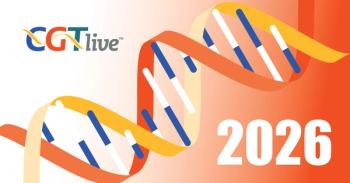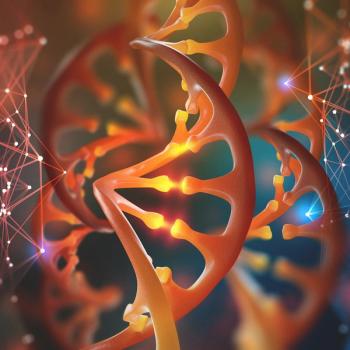
Gene Therapy Zolgensma Displays Efficacy in SMA Across Spectrum of Patients
In a pair of phase 2 trials and a phase 1 study, patients with SMA types 1 and 2 treated with the gene therapy displayed a number of motor milestone achievements and a prolonged event-free survival rate.
Olga Santiago, MD
New interim data from a number of ongoing trials of Zolgensma (onasemnogene abeparvovec-xioi) in spinal muscular atrophy (SMA) have been announced by AveXis, showing positive signals in a phase 1 study, as well as a pair of phase 3 trials.
The data for the one-time infusion included that from the phase 1 STRONG trial, which showed rapid motor function gains and milestone achievements with intrathecal delivery; from the phase 3 STR1VE trial, in which patients continued to show prolonged event-free survival in addition to motor function increases and milestone achievement similar to its precursor START trial; and from the SPR1NT trial, which showed age-appropriate motor milestone accomplishments.
The data were presented at the 2019 American Academy of Neurology (AAN) Annual Meeting in Philadelphia, Pennsylvania.
"With just a single, one-time dose, we are seeing Zolgensma provide prolonged survival, rapid motor function improvement and milestone achievements that patients never experience if their disease is left untreated," said David Lennon, PhD, president of AveXis, in a statement. "These robust data presented at AAN represent a growing body of evidence that support the use of Zolgensma as a potential foundational therapy for the treatment of SMA across a variety of populations."
In the open-label, phase 3 SPR1NT trial, 18 patients who were ≤6 weeks of age with 2 or 3 copies of SMN2 were given a single intravenous infusion of Zolgensma. As of this analysis, 100% of those patients were alive and event- free.
In patients with 2 copies of SMN2 (n = 8), a mean improvement of 8.9 points in Children's Hospital of Philadelphia Infant Test of Neuromuscular Disorders (CHOP-INTEND) scores were observed at 1 month, with all patients achieving or maintaining a CHOP-INTEND score of ≥50 points. In total, 4 patients achieved CHOP-INTEND scores of 60 points, and 3 achieved the maximum score of 64 points.
Additionally, in this group, Bayley-III Gross Motor scores were an average of 8.4 at 2 months post-infusion, with 4 patients able to sit without support for ≥30 seconds, and a single patient able to stand with assistance for ≥2 seconds.
"SMA is rapidly progressive, and we know that intervening as early as possible in the disease course is critical to rescue motor neurons and preserve motor function," Olga Santiago, MD, chief medical officer of AveXis, said in a statement. "Patients treated with Zolgensma before the onset of symptoms are achieving age-appropriate motor milestones in line with normal development. These SPR1NT data reinforce the potential Zolgensma has as a foundational treatment for patients with SMA."
In the phase 3 STR1VE trial, Zolgensma was assessed in a single intravenous infusion in patients with SMA Type 1 who were younger than 6 months of age, with 1 or 2 copies of the SMN2 backup gene and bi-allelic SMN1 gene deletion or point mutations.
Ultimately, 95% of patients (19 of 20) who could reach 10.5 months of age, or discontinued before then, survived to that point without permanent ventilation. Additionally, 87% (13 of 15) who could reach 13.6 months, or discontinued prior to then, did so without permanent ventilation. If untreated, patients with SMA reach these time points of 10.5- and 13.6-months event-free only 50% and 25% of the time, respectively.
CHOP-INTEND scores in the STR1VE cohort increased by an average of 6.9 points, 11.7 points, and 14.3 points at months 1, 3, and 5, respectively. All told, a score of ≥40 was achieved by 95% (21 of 22) of patients. Motor milestones were achieved by a number of patients, with 1 patient able to pull to a standing position and 11 patients able to sit without support for ≥30 seconds, according to Bayley-III Gross Motor criteria at a mean 8.2 months posttreatment.
In STRONG, a phase 1 trial of patients with SMA Type 2 and 3 copies of the SMN2 gene, and who were able to sit but unable to stand or walk at the time of enrollment. In total, 30 patients were evaluated with intrathecal administration of the therapy.
The study showed that 19 patients—100% (n = 12) of those dosed at ≥ 24 to <60 months and 7 who were dosed at ≥6 to <24 months—experienced a mean increase in Hammersmith Functional Motor Scale-Expanded (HFMSE) score from baseline of 4.2 points. Of the 12 patients dosed at ≥24 months of age, 50% experienced improvements of ≥3 points from baseline at 1 month.
Ten patients in STRONG achieved 22 motor milestones, including 2 who were able to stand independently. Of those 2, a single patient walked alone in the younger cohort, and a single patient gained the ability to walk with assistance in the older group.
"With an average of just over 6 months of data available for these Type 2 patients following treatment with Zolgensma, we are pleased to see they are achieving motor milestones, including the ability to stand and walk," Santiago said. "Based on these early promising data, we plan to approach regulators to define the path to registration for intrathecal administration of Zolgensma."
As for adverse events (AEs), the 3 trials have displayed relatively consistent safety profiles with previous trials. In SPR1NT, there were 3 serious AEs—croup (n = 1), lethargy (n = 1), and hypercalcemia (n = 1)—though all were considered unrelated and resolved. In STRONG, there were 2 serious AEs, both being transaminase elevation, though the incidence of this seemed to be lower than what was observed with intravenous administration.
The therapy, previously known as AVXS-101, was designed to tackle the genetic cause of SMA and to prevent further degeneration of the muscles by providing a functional copy of the human SMN gene. According to AveXis, it is the first in a proprietary platform to treat rare, monogenic diseases using gene therapy.
In December 2018, the FDA accepted AveXis’s biologics license application (BLA) for use of Zolgensma with SMA Type 1 patients, after it had previously been granted a breakthrough therapy designation and priority review. The company stated that it plans for regulatory action to occur in May 2019.
For more coverage of AAN 2019,
REFERENCE
AveXis presented robust data at AAN demonstrating efficacy of Zolgensma® in broad spectrum of spinal muscular atrophy (SMA) patients [press release]. Basel, Switzerland: AveXis; Published May 5, 2019. novartis.com/news/media-releases/avexis-presented-robust-data-aan-demonstrating-efficacy-zolgensma-broad-spectrum-spinal-muscular-atrophy-sma-patients. Accessed May 5, 2019.
Newsletter
Stay at the forefront of cutting-edge science with CGT—your direct line to expert insights, breakthrough data, and real-time coverage of the latest advancements in cell and gene therapy.






























